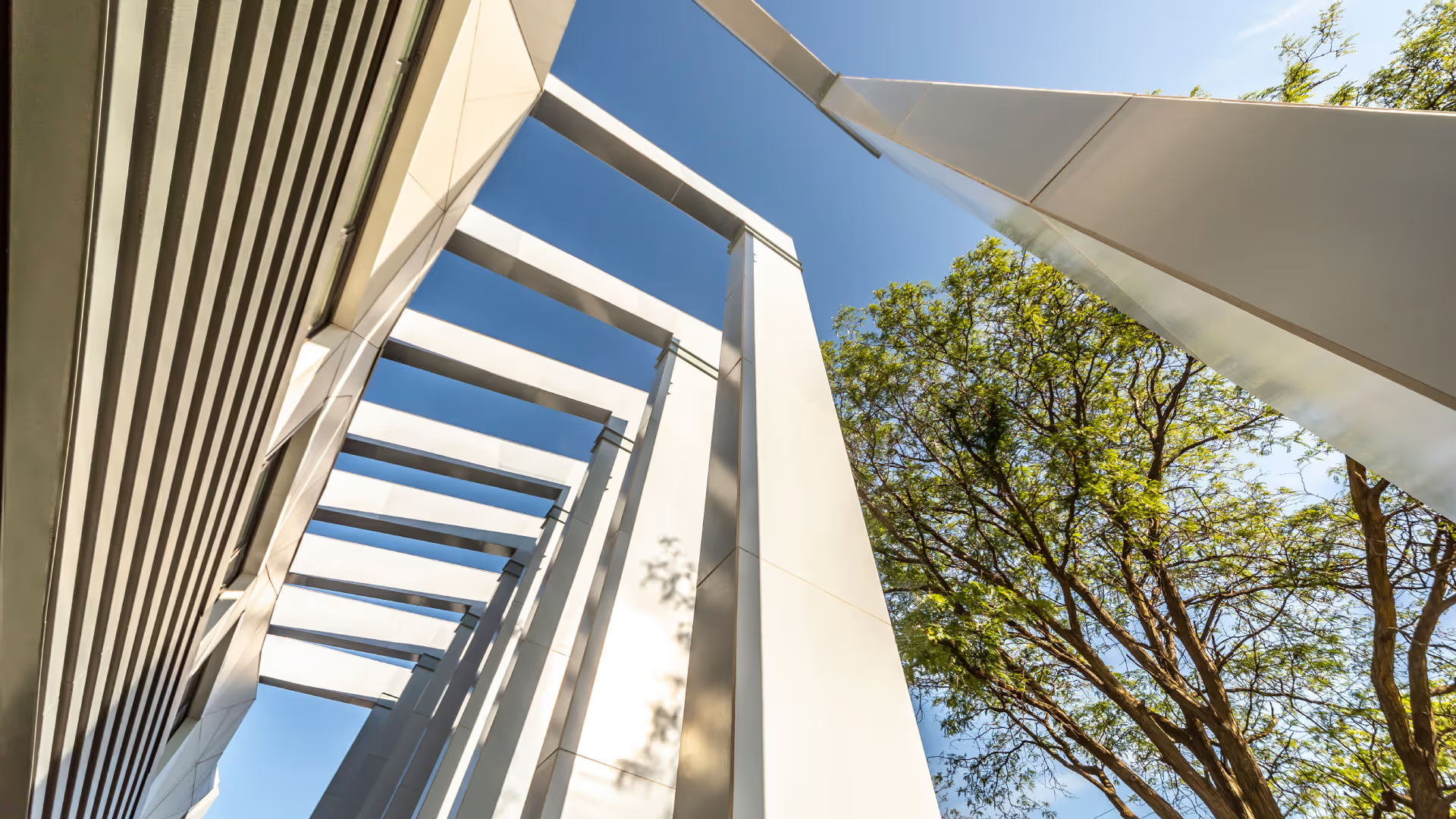

Climate change remains a foremost concern in the world. Particularly, its relationship with the architecture and construction industries in terms of emissions. This responsibility for the field of architecture stems from the fact that the construction industry contributes to 40% of emissions. Building sector's demand is projected to increase by 70% by 2050.
We need renewable energy production strategies, such as BIPV, to mitigate future energy security issues. This is because traditional sources of fuel have become increasingly scarce, and an necessary part of designing for sustainability.
The solar company Mitrex created innovative BIPV systems to address growing concerns around climate change. The panels also integrate into buildings to address new and age-old challenges related to issues of sustainability.
Historically, solar energy harvesting has been expensive, relatively inefficient, and hampered by poor design. Existing building-integrated photovoltaics (BIPV) are less practical and economically challenging due to design limitations and poor aesthetics. New tools and technologies for building design have come to assist architects in the creation of buildings that generate their own energy.
Mitrex solar BIPV systems can be integrated within a building envelope in order to generate power while simultaneously enhancing the aesthetic, and functional qualities of a project of architecture. They replace conventional building materials for the whole or part of the building envelope including facades, skylights, roof areas, and other external building elements. They often costing the same as the materials they would replace. From this perspective, renewable energy systems can be integrated as functional, aesthetic, and cost-effective elements within buildings.
The company has designed lightweight solar cladding that can be customized to any construction and design needs, and conform to desired angles and panel size. Mitrex BIPV can also mimic any material in the world, including natural finishes such as marble, wood, cement and porcelain. These BIPV options are complemented by a range of different colors and patterns with the use of a customizable facing. Furthermore, these solar cladding modules are frameless and produced in a range of shapes and sizes with near-seamless edges. This immense design flexibility contrasts the stringent restrictions of traditional solar panels, which are limited in size and not well suited to design integration.
Mitrex Solar Glass was also created with design in mind, replacing regular glass without compromising on performance and functionality. This BIPV element can be integrated into windows, bus stop shelters, skylights, curtainwalls, and railings (to name a few). They maximize energy production on otherwise unused surfaces. SolaRail is a BIPV glass railing with options for transparency levels that functions as an aesthetic and effective means of generating solar energy.
In urban areas where space is limited, BIPV Solar Glass offers an economical and architectural opportunity to incorporate renewable energy into slender high-rises. These products use advanced transparent or opaque solar technology. It allows for full customization of tints, transparency, and size while maximizing the amount of energy produced. In addition, Solar Glass has seamlessly integrated circuitry for all electrical components to ensure a smooth appearance.
However, these BIPV products are not only designed for large companies and expensive high-rises. Mitrex’s Solar Roof is designed to look the same as traditional roofing materials such as asphalt and slate shingles. They simultaneously generate clean energy. The product allows single-family homeowners a means of reducing their carbon footprint and grid reliance.
Lower-density homes with solar roofs are not a new phenomenon. However, recent technological advances give builders and architects the option of adopting green initiatives without compromising a home’s design. Solar Roof systems come in a range of UV-stable, fade-resistant colors and patterns in keeping with design needs. Helpfully, no specialized installation is required. Once installed, their elements require no maintenance because they are treated with an anti-soiling coating that reduces the accumulation of dust and dirt on surfaces.
These technologies hold the potential to produce a tangible effect on energy use and sustainability efforts wherever they are implemented. The widespread adoption of building integrated solar modules (BIPV) has the potential to reduce the carbon footprint of a city, but also to address the growing demand and insufficient supply of energy. To get a better idea, a typical 30-story building with Mitrex integrated solar technology produces approximately 13 million kWh of energy, offsetting 9,500 metric tons of CO2 over 30 years. The impact of large-scale adoption could be historic.
News & Articles

In today’s fast-paced building landscape, materials need to do more than look good—they need to perform. At Mitrex, our Building-Integrated Photovoltaic (BIPV) cladding isn’t just energy-generating; it’s engineered for resilience.

In today’s fast-paced building landscape, materials need to do more than look good—they need to perform. At Mitrex, our Building-Integrated Photovoltaic (BIPV) cladding isn’t just energy-generating; it’s engineered for resilience.

Mitrex’s customizable solar panels merge sustainability with design, transforming buildings into solar-powered works of art.

Mitrex’s customizable solar panels merge sustainability with design, transforming buildings into solar-powered works of art.
Discover how Mitrex collaborates with architects and developers to create innovative, energy-efficient buildings. Learn how their process shaped the Industrial Wall in Toronto and redefined sustainable architecture.
Discover how Mitrex collaborates with architects and developers to create innovative, energy-efficient buildings. Learn how their process shaped the Industrial Wall in Toronto and redefined sustainable architecture.